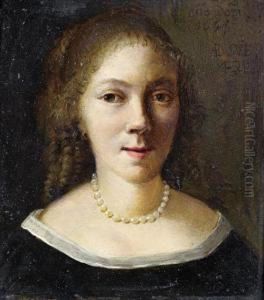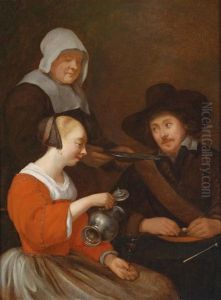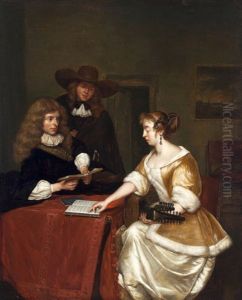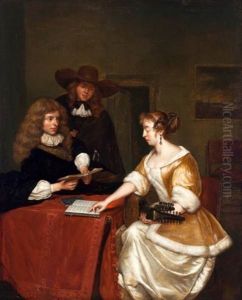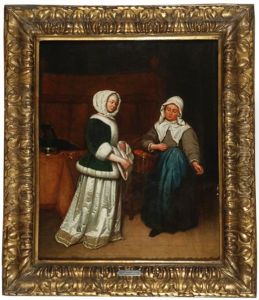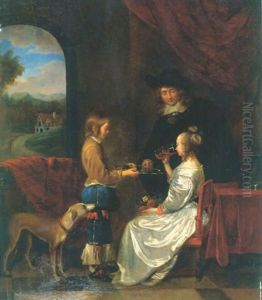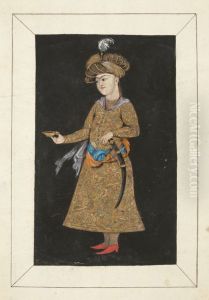Gesina Ter Borch Paintings
Gesina ter Borch was born in 1633 in Zwolle, the Netherlands, into a family with strong artistic ties. Her father, Gerard ter Borch the Elder, was a successful painter and her half-brother, Gerard ter Borch the Younger, became one of the most renowned Dutch Golden Age artists. It is within this family environment, rich in artistic influence and education, that Gesina developed her own skills as an artist.
Although women artists of the 17th century often faced significant obstacles in pursuing a career in the arts, Gesina benefitted from her family's support. She worked in various mediums, including drawing, watercolor, and embroidery. Gesina is particularly known for her detailed and expressive watercolor illustrations, which often depicted scenes from everyday life, as well as personal and family portraits. Her work provides a unique and intimate glimpse into Dutch society and the private world of the ter Borch family.
Gesina ter Borch's contributions to the art world also include her album amicorum, or friendship book, which she maintained over several years. This album is a collection of drawings, poems, and messages from friends and family, and it illustrates the customs and social networks of the Dutch elite during the 17th century. Her artistry is often overshadowed by that of her half-brother Gerard, but recent scholarship has sought to recognize her work in its own right.
Gesina ter Borch never married and lived much of her life in the city of Deventer. She continued to produce art throughout her life and was engaged in the cultural and intellectual circles of her time. She died in 1690, leaving behind a body of work that reflects her personal experiences and the broader cultural milieu of the Dutch Golden Age. Her legacy is preserved in various collections, including the Rijksmuseum in Amsterdam, where some of her works are displayed, offering insight into the life and talent of this accomplished but often overlooked artist.
